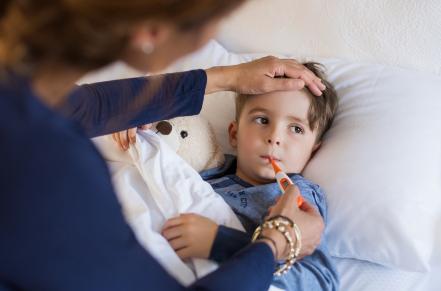What Is It?
Roseola is a common rash in infants caused by a virus.
What Are the Symptoms?
Symptoms include a high fever (greater than 103 F) that lasts for three to five days. Other symptoms include runny nose, irritability, eyelid swelling and tiredness. The high fever can occasionally cause febrile seizures in certain infants. When the fever breaks, a pink, patchy rash appears over the neck, chest and body and typically lasts from one to three days.
Who Gets It and How?
Symptomatic Roseola is most common in young children under the age of two. However, most adults (85 percent) have been exposed, and may transmit the virus, even though they appear well. Roseola is spread from person to person; the most likely means of transmission is from the respiratory secretions of carriers of the virus. It may also be spread by the fecal-oral route. Roseola is not highly contagious; usually, it goes away without any treatment.
When Should People with this Illness Be Excluded?
A child with fever and rash should be excluded from child care until seen by a health care provider. After the fever breaks, a child may return to care while the rash is still present, provided that the child feels well and is able to participate fully in all activities.
Is Roseola a Problem for Pregnant Women?
There is no evidence that exposure to Roseola in pregnancy has any negative effect on the mother or fetus.
How Can I Limit the Spread of Roseola?
- Make sure that all children and staff use good hand washing practices; especially after wiping or blowing noses, after contact with any nose, throat or eye secretions, and before touching food.
- Use standard precautions for diapering and toilet training.
- Sanitize the diaper changing area after each use.







